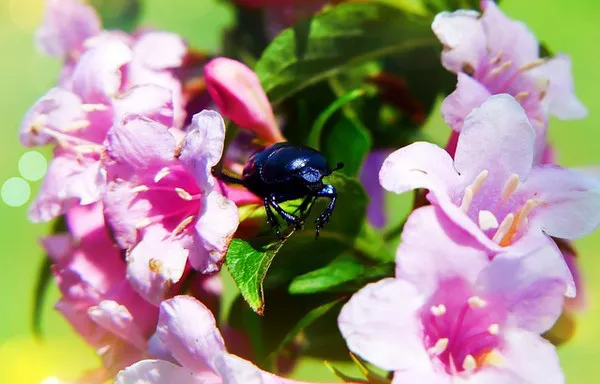Gnats, those tiny, pesky insects that seem to materialize out of thin air, can be a significant nuisance when they infest your beloved indoor plants. These miniature flies not only disrupt the aesthetics of your green oasis but can also damage your plants by feeding on their roots. Fortunately, there are several proactive measures you can take to keep gnats out of your plants and maintain a healthy and thriving indoor garden.
Understanding the Culprits: Fungus Gnats and Their Habits
Before diving into the solutions, it’s essential to know your enemy. The most common gnats that invade indoor plants are fungus gnats (Sciaridae family). These small, dark-colored insects have long, slender bodies and are typically attracted to the moisture and organic matter found in potting soil. Female fungus gnats lay their eggs in the top layer of the soil, and once hatched, the larvae feed on decaying plant material and organic matter, including your plant’s delicate root system.
As they feed, the larvae can cause substantial damage to your plant’s roots, leading to weakened growth and even plant death if left unchecked. Adult gnats are less harmful but can still be a nuisance as they flit around your plants, often landing on leaves and soil.
Prevention Is Key
Preventing a gnat infestation is often more manageable than trying to eliminate one. Here are some proactive steps you can take to keep gnats out of your plants:
Choose the Right Soil Mix: Start with high-quality, well-draining potting soil for your plants. Avoid soil that retains excess moisture, as it can attract gnats. Look for potting mixtures labeled as “sterile” or “soilless” to minimize the risk of introducing gnat eggs or larvae.
Use Quality Containers: Opt for plant pots with good drainage holes at the bottom. Ensure that excess water can easily escape from the pot, reducing the risk of waterlogged soil that attracts gnats.
Water Properly: Overwatering is a common mistake that can create a gnat-friendly environment. Water your plants only when the top inch or so of the soil feels dry to the touch. Use a saucer to catch any excess water, and empty it promptly to prevent soil saturation.
Employ Hydroculture: Consider growing some of your plants in hydroponic or semi-hydroponic setups, where plants grow in a water-based medium rather than soil. This eliminates the soil environment that attracts gnats.
Quarantine New Plants: Before introducing a new plant into your indoor garden, quarantine it in a separate area for a few weeks to ensure it is free of gnats or other pests. This precautionary step can help prevent an infestation from spreading to your existing plants.
Use Yellow Sticky Traps: Yellow sticky traps can be an effective tool for monitoring and capturing adult gnats. Place them near your plants to help reduce the gnat population. While not a complete solution, they can help control the adult population and prevent further breeding.
Keep It Clean: Regularly clean the area around your plants, removing fallen leaves and debris that can serve as breeding grounds for gnats. Maintain good hygiene in your plant care routine.
Natural Solutions to Deter Gnats
If you notice the presence of gnats in your plants despite your best preventive efforts, don’t panic. There are several natural remedies that can help deter these unwanted visitors:
Neem Oil: Neem oil is a natural insecticide that can help control fungus gnats. Mix a few drops of neem oil with water and apply it to the top layer of the soil. Neem oil not only kills gnats but also disrupts their life cycle by preventing larvae from developing.
Beneficial Nematodes: These microscopic worms can be an effective biological control method. When applied to the soil, they seek out and feed on gnat larvae, reducing their population.
Cinnamon Powder: Sprinkle a thin layer of cinnamon powder on the surface of your plant’s soil. Cinnamon has antifungal properties that can deter gnats from laying eggs in the soil.
Sand or Grit: Adding a layer of sand or horticultural grit on top of the soil can make it less appealing for gnats to lay their eggs. This barrier prevents the larvae from accessing the soil’s organic matter.
Soil Drying: Allowing the top layer of soil to dry out between waterings can make the environment less suitable for gnat larvae. Be cautious not to let your plant become too dry, as this can harm its health.
Diatomaceous Earth: Food-grade diatomaceous earth can be sprinkled on the soil surface to kill gnat larvae on contact. Be sure to use a dust mask when applying, as inhaling the dust can be harmful.
Mosquito Dunks: These donut-shaped products, containing Bacillus thuringiensis israelensis (BTI), can be placed in the water you use for watering your plants. BTI is a natural larvicide that targets the larvae of various insects, including gnats.
Persistence Is Key
Dealing with a gnat infestation can be frustrating, but it’s essential to be persistent in your efforts to eliminate them. Keep in mind that gnats reproduce quickly, so it may take some time and repeated treatments to completely eradicate them from your indoor garden.
Conclusion
Keeping gnats out of your plants requires a combination of preventive measures and natural remedies. By choosing the right soil, maintaining proper watering habits, and using natural solutions such as neem oil, beneficial nematodes, and cinnamon, you can create an environment that is less inviting to these pesky insects.
Remember that consistency is key in your battle against gnats. Regularly monitor your plants, keep them clean, and be patient as you work to eliminate these unwelcome guests. With dedication and the right strategies, you can enjoy a thriving indoor garden free from the annoyance and potential harm of gnats.


